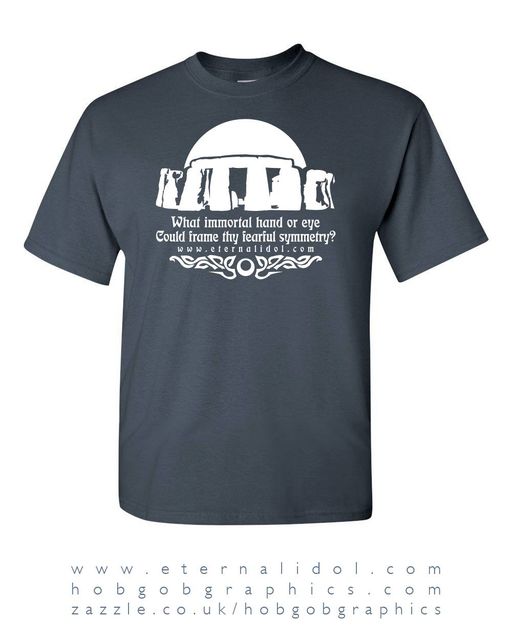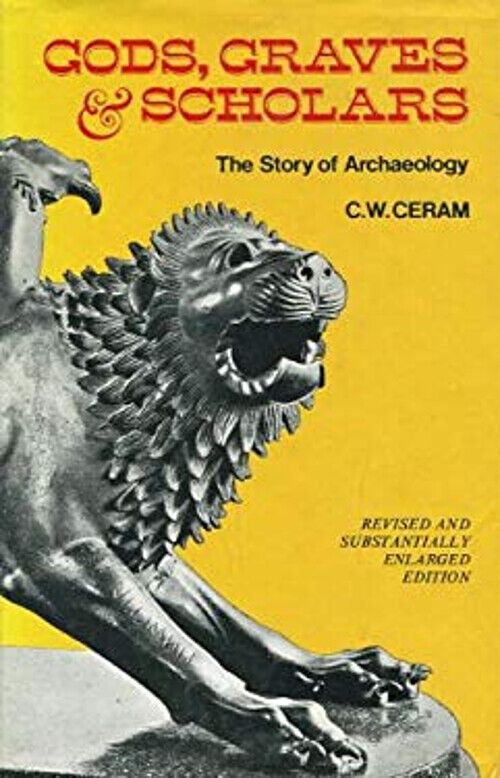
My mother indulged my growing passion for the exotic when I was a child by buying me books on Greek and Roman myths, as well as other books and magazines dealing with ancient civilisations. The one that most caught my imagination was C.W. Ceram’s famous volume Gods, Graves and Scholars, which made me feel “like some watcher of the skies when a new planet swims into his ken…” whenever I immersed myself in its pages.
In 1973, my home town of Usk in south Wales was the location of a large archaeological excavation by Cardiff University, so when I returned home for the holidays from boarding school, I immediately headed for the site of the dig. I didn’t spend much time gazing longingly through the railings separating the dig from Maryport Street before a kindly supervisor (named Sabrina, I think) appeared and invited me to take a tour of the excavations. I leapt at the chance, then at the conclusion, I said I was studying Latin and ancient Greek at school and I asked if I could possibly work on the dig for a few weeks. My wish was granted and this turned out to be one of the most blissfully happy summers I can remember.
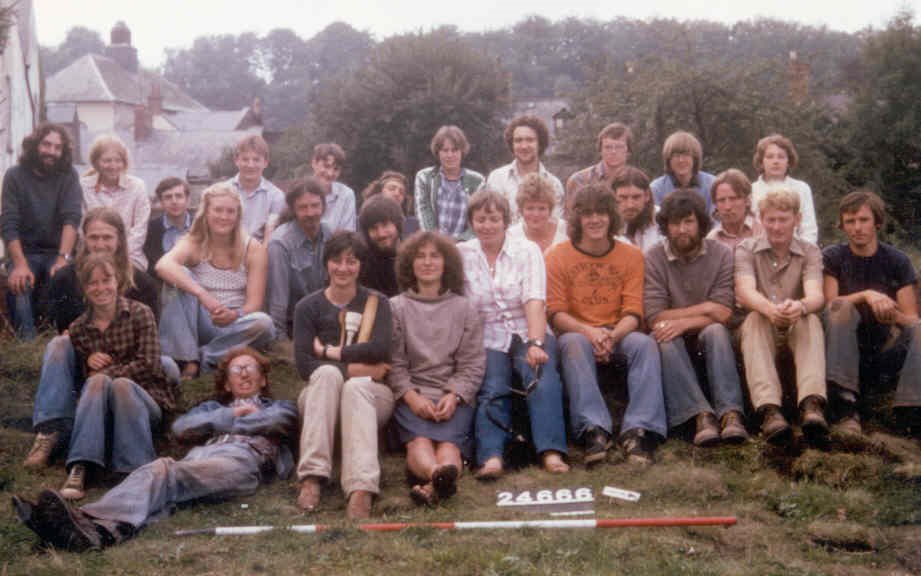
A few years later, I worked at another excavation in Usk, this time one conducted by the Gwent-Glamorgan Archaeological Trust. Just as on the previous dig, I enjoyed my time there immensely and although I graduated towards a career as a performer, I always stayed in touch with the friends I’d made on these digs. I continued to read about archaeology for decades, before I found myself living on Salisbury Plain and working for Wessex Archaeology, whose offices were just outside Salisbury.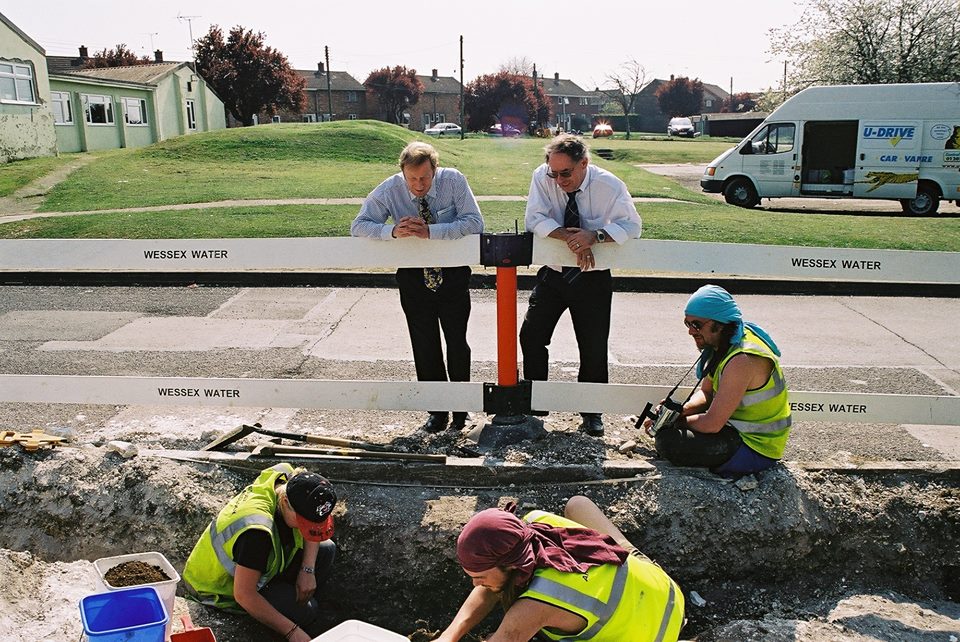
My career as an archaeologist generated intense interest and profound unhappiness in some quarters as my writing on a previous incarnation of Eternal Idol became ever more popular, leading to me appearing in the local, national and international press, as well as on television and radio. I intend to relive these blissfully happy times soon enough, but for now, here are the barest bones of my experiences with Wessex.
I started work on site at a big excavation at Hamwic, or Southampton, in January 2000, while I also dug at Boscombe Down, Theale near Reading, Swindon hospital, Corfe Castle and on the Stonehenge A303 project. There was the site of a former Rolls Royce factory at Westhampnett, a mediaeval salt works near the southern edge of the New Forest and numerous others. I particularly enjoyed excavating at the site of Hyde Abbey, just outside Winchester, a place that once housed the mortal remains of King Alfred, but this was all nearly a quarter of a century ago, which means some have faded from my memory, while other records were destroyed in the house fire of March 2018.
The photo above shows me filming the excavation of the Boscombe Bowmen in 2003. I worked in the Environmental Department at Wessex and in the Archives Department, while I spent a lot of time working in the Finds Department. While there, I supervised the large work experience input and one of the things that pains me most about the oft-mentioned fire that destroyed my home in March 2018 is the woeful fact that I lost fifteen to twenty highly appreciative, irreplaceable, hand-written letters. I’d been sent them by young people who had been to Wessex on work experience, who thanked me profusely for the enjoyment they’d experienced under my tutelage and for how much they’d learned in that time.
As well as supervising the work experience intake, I travelled extensively around Wiltshire teaching archaeology at schools. I chose to steer clear of delivering dreary, worthy sermons about archaeology while I did this, opting instead to speak of the excitement I’d experienced as a result of reading Ceram’s Gods, Graves & Scholars as a kid, and of working on my first excavation in Usk, while I also spoke of the 10 minute film I’d made for ITV West about Stonehenge in 1998, long before I worked for Wessex.
I further told them of a similar appearance I’d made on the BBC’s Style Street in the same year, and of the exclusive invitation I’d received to attend the Summer Solstice in select company that year, as show in the photo below.
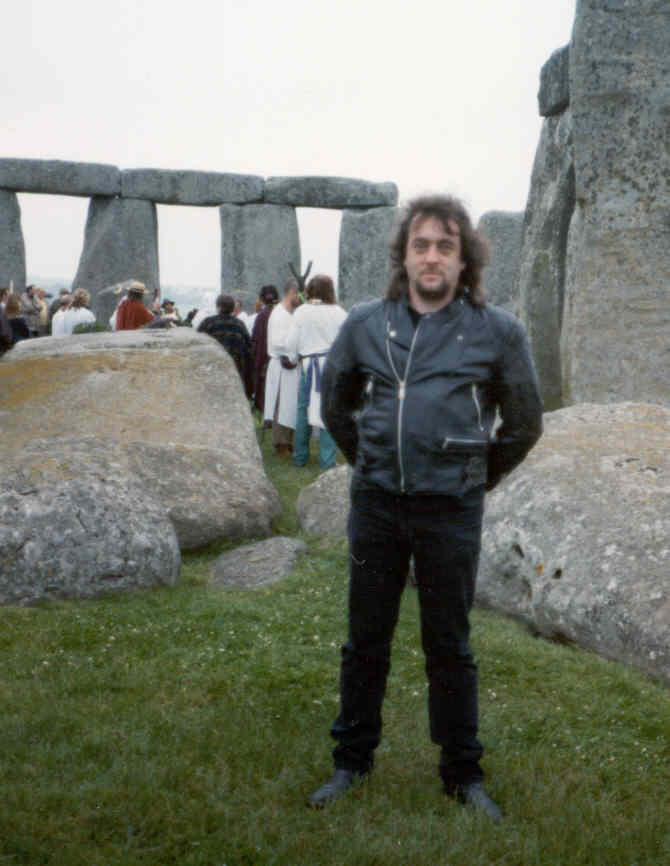
As if all this weren’t thrilling enough, I spoke of how I also worked in the short-lived Communications Department at Wessex, during which time I co-wrote and edited a glossy inhouse magazine entitled Insite. I also worked with media from around the world when presenting what were perceived as high profile discoveries such as those of the Amesbury Archer and the Boscombe Bowmen.
I know from long experience that some reading this will feign spluttering outrage that I should promote such apparently shallow, sensationalist, self-indulgent subject matter when addressing young, impressionable minds. However, I have yet to meet any archaeologist – and I’ve met and worked with a great many in my time – who didn’t salivate and go giddy with excitement at the prospect of discovering “wonderful things” or “treasure”, i.e. gold, bones, stones or a variant on these things.
There are exceptions, of course, and I made quite a few, but these things are what the press are most interested in. And when I was a young kid, my imagination was fired – and still is – by all the many exotic aspects of British archaeology. Studying soil samples, for example, is a worthy and noble calling, but it doesn’t get pulses racing, even in those who work in this field.
Otherwise, I knew and worked with Phil Harding, something that the innumerable young fans of Time Team absolutely loved. I worked behind the scene on several episodes of Time Team, as well as Secrets of the Dead and Past Finders, much of which was filmed at Wessex. I feel it’s worth mentioning that I continued working in archaeology in a literary fashion after I left Wessex, with the result that a former version of Eternal Idol garnered millions of views while it was in existence. This body of work, which from memory consisted of something like 750 lengthy essays, provoked a renewed interest in my writing that led to me appearing in the local, national and international press, as well as on television, radio and elsewhere.
There is much else to relate as far as my long-standing involvement with archaeology is concerned, but I don’t want to try to the patience of the reader by presenting a surfeit of information on this matter, as what remains will surface from time to time in my posts here.
I am a member of ICOMOS, the International Council on Monuments and Sites.
And finally for now, do I have any archaeological heroes? Most certainly; they are Heinrich Schliemann, Frederick Bligh-Bond and T.S. Lethbridge, and one of my aims is to be one day counted among their august number.
“That’s my dream, that’s my nightmare…”
